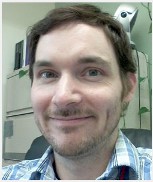Dr. Mark Mussman is the Education Coordinator at Mercy Neighborhood Ministries, Cincinnati, Ohio. I asked Mark about his perception of the latest edition of the GED test.
Kate: The new GED test was introduced some years ago and what is your perception of the new test?
Onsego GED Prep
Pass the GED Test in 2 Months
Learn Just 1 Hour a Day.
It doesn’t matter when you left school.
Dr. Mark: The new GED test is an opportunity for students to demonstrate critical thinking and job-readiness skills.
There are two major differences, besides cost, to the new test: form and content. Although there was a computerized version of the 2002 GED Test, it was structurally the same – relying mainly on multiple-choice questions.
The form of the new test includes multiple-choice questions, but also requires some computer skills. This is a giant leap for many of our students who are both older (out of the workforce for many years) and computer uncertain.
Online GED Classes – Fast and Easy
Prepare Quickly To Pass The GED Test.
Get Your Diploma in 2 Months.
In terms of content, the former test contained mostly “recall” items, in which the information was presented on the page, and students were tasked with distilling the information and answering questions directly.
The new test consists of more complicated problems, which are built upon Webb’s Depth of Knowledge. Students are required to use critical thinking skills to inform their choices.
Correct answers will consist of comparing and contrasting ideas and making specific determinations based on the observations they make. In essence, students are being asked to become expert problem-solvers.
We had been preparing for the change over the past several years by getting students to understand the differences between simple and complex methods.
Simple methods do not need multiple steps, while complex methods rely on patterns, multiple steps, and synthesizing ideas in order to solve a problem. Students looking for a magic method of solving problems do themselves a severe disservice since they need to be dynamic problem-solvers in order to conquer the GED test.
Kate: The new GED test is more demanding; do you notice changes in how people prepare for the test?
Dr. Mark: In order to prepare for the new GED test, we have changed our focus to a work and technology-ready site. This means that all of the students are engaged in typing classes,  workforce development seminars, and have digital literacy opportunities.
workforce development seminars, and have digital literacy opportunities.
We have also added more historical primary sources to our curriculum to ensure students have a strong foundation for both the Reading/Writing and Social Studies tests.
Overall, however, I do not believe students are changing their own studying patterns on their own. For instance, students who were dedicated are still dedicated to obtaining their GED test, while others continue the false start pattern. I think students understand the computer-based testing changes better than the content change.
They are more concerned with the changes in the formula sheet than they are with the inclusion of trigonometry in the test. Sadly, I believe they are still relying on others to bring them information rather than using their critical thinking skills to boost their own learning process. Read also this post: Craig J. Boykin-From GED to PhD.
Kate: What is the most challenging for organizations like yours regarding implementing the new GED test course material?
Dr. Mark: For our small, community-based non-profit, we are struggling with implementing Project-Based Learning (PBL) across disciplines. We are very strong in our disciplinary instruction, whether it be Reading, Writing, Social Studies, Math, Science, or even Technology, but we are just now being able to work across disciplines.
For example, we are currently working on a PBL approach to community health reports in our region. In Reading, students read and discuss the implications of the community health study. In Writing, students determine ways in which community health affects them and write essays on it. In Social Studies, current events and a broader historical view of community health are presented.
Finally, in Math and Technology, students are designing, implementing, and analyzing community health surveys for our smaller community. This is a challenge because it involves many instructors, volunteers, and even community members.
I understand that PBL is not the only approach, but it does lend itself well to problem-solving and critical thinking.
This brings me to another challenge – volunteers. We now know that it’s not enough to allow volunteer tutors to work one-on-one with students in any area, rather volunteers need to be embedded in the classrooms in order to continue the problem-solving thread presented in classes.
Volunteers themselves feel less fulfilled because they are not able to focus on imparting a specific skill, but rather they must focus more on critical thinking and problem-solving skills. As time goes on, I believe this will become less of an issue.
Kate: Can you share some figures about the number of people participating in your GED classes?
Our managed enrollment Program serves about 130 students each year. The vast majority of our students are minority women, single heads of households, who are enthusiastic about entering the workforce. Generally, students enter our Program with a 2nd-4th-grade educational functioning level. We thrive on small classes, usually 5-15 people in size.
The amount of time students need to complete their GED tests ranged dramatically from 2 months to several years. Like anything, it all depends on the effort students put into it, and the point at which they began. We focus heavily on work-readiness skills because most of our students get jobs during their time with us. We work hard on ensuring that crises do not impede them from obtaining their goals.
Last Updated on March 26, 2025.